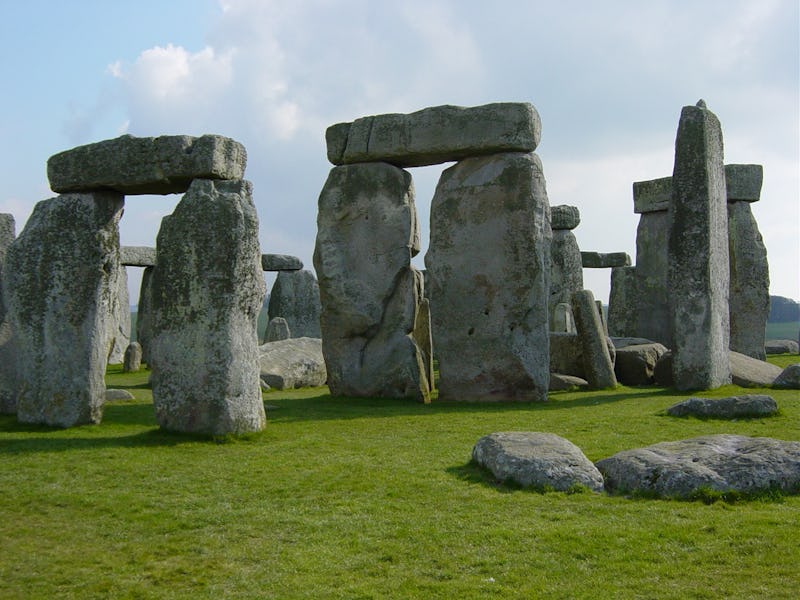How Stonehenge Architects Used Pythagoras' Theorem for the Mysterious Structure
It may have beat Pythagoras by 2,000 years.

There are few prehistoric monuments still standing that have catalyzed as much intrigue as Stonehenge. The Neolithic and Bronze Age structure may have been built as early as 3000 BC, and yet archeologists are still arguing over whether it was a sacred temple, a parliamentary site, a burial ground, or Britain’s first night club. The latest claim from experts is that the architects of Stonehenge were greater astronomers than once believed, having applied Pythagoras’ theorem 2,000 years before the Greek philosopher was born.
According to the new book Megalith: Studies in Stone a team of scientists have re-examined Stonehenge’s geometric applications and concluded that they were built by astronomers using sophisticated mathematical theories that were not recorded until centuries years later. Contributor and editor John Martineau argues that Pythagoras’ discovery that the square of a right triangle’s hypotenuse is equal to the sum of the squares of the other two sides was applied in the formation of Stonehenge.
Cover for "Megalith: Studies in Stone'
“We see triangles and double squares used which are simple versions of Pythagorean geometry. And then we have this synthesis on different sites of solar and lunar numbers,” he told The Telegraph. The book points to Stonehenge’s earliest incarnations, cited here as 2705 BC, where the rectangle of four Sarsen stones are split in half diagonally to form a Pythagorean 5:12:13 triangle.
The eight lines which stretch from the rectangle and triangles to shape the extent of the sun’s light also perfectly align to important dates in the Neolithic calendar, including the Summer Solstice, which coincided with the book’s launch on Thursday.
Contributor Robin Heath agrees with Matineau that Stonehenge’s builders were using sophisticated geometry and goes so far as to point to the Pythagorean triangles that appear on the British landscape. Stonehenge, as well as its two linked sites of the Lundy Island and the Welsh locations where the Preseli bluestones were cut, create a Pythagorean triangle on the map, he suggests.
“These days it’s seen as hippy-dippy or New Age, but actually it’s a colossal omission to the history of science that we don’t see these monuments for what they are,” Heath said.
Stonehenge isn’t the only henge to embrace the Pythagorean theorem. Woodhenge, which is about two miles northeast of its more famous counterpart, was constructed with a perfect 2:35:37 triangle. Many of the stone circles found around the British Isles are not fully circular but derived from Pythagorean triangles, revealing the architect’s prioritization of astronomical movements and geometry over forming basic shapes.
“People see the Neolithic builders of Stonehenge as howling barbarians, when they were very learned and it has been forgotten,” Heath said.
Much like the Egyptian pyramids, Stonehenge continues to reveal new insight that often challenges previously held theories, resulting in hotly contested research. Not only is the societal purpose of Stonehenge still up for debate (and will be debated ad nauseam) but its mathematical principles are still being investigated. Stonehenge is not just a muse for historical mysteries, but a rare ruin that can still offer scientific discoveries.